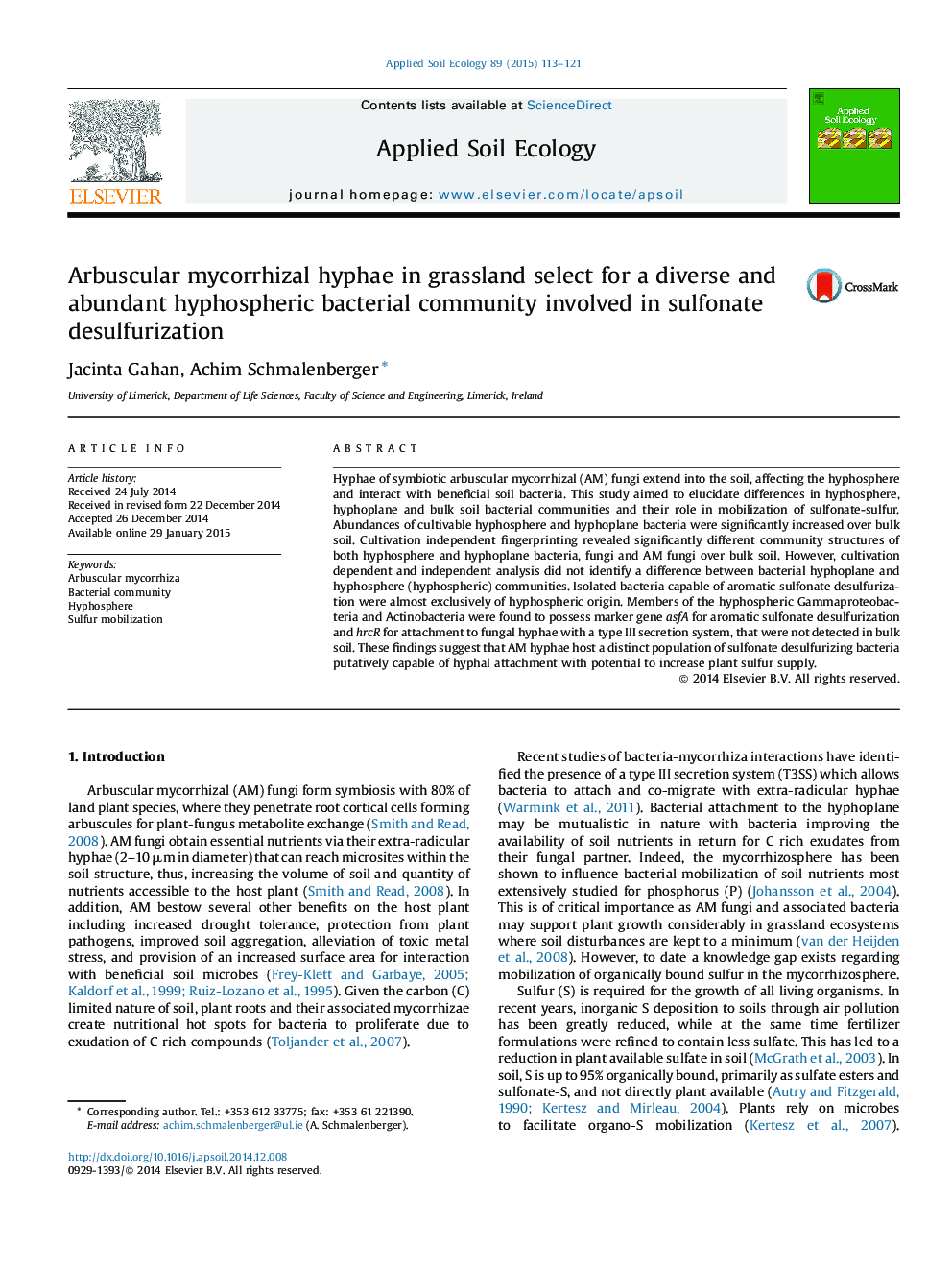| Article ID | Journal | Published Year | Pages | File Type |
|---|---|---|---|---|
| 4382037 | Applied Soil Ecology | 2015 | 9 Pages |
•Hyphae are host to a larger cultivable bacterial community than bulk soil.•Hyphosphere and hyphoplane bacterial communities were similar in composition and abundance.•Hyphospheric bacterial, fungal and AM fungal communities were significantly different to the ones from bulk soil.•Dominant sulfonate desulfurizing hyphospheric bacteria putatively attach to AM hyphae.
Hyphae of symbiotic arbuscular mycorrhizal (AM) fungi extend into the soil, affecting the hyphosphere and interact with beneficial soil bacteria. This study aimed to elucidate differences in hyphosphere, hyphoplane and bulk soil bacterial communities and their role in mobilization of sulfonate-sulfur. Abundances of cultivable hyphosphere and hyphoplane bacteria were significantly increased over bulk soil. Cultivation independent fingerprinting revealed significantly different community structures of both hyphosphere and hyphoplane bacteria, fungi and AM fungi over bulk soil. However, cultivation dependent and independent analysis did not identify a difference between bacterial hyphoplane and hyphosphere (hyphospheric) communities. Isolated bacteria capable of aromatic sulfonate desulfurization were almost exclusively of hyphospheric origin. Members of the hyphospheric Gammaproteobacteria and Actinobacteria were found to possess marker gene asfA for aromatic sulfonate desulfurization and hrcR for attachment to fungal hyphae with a type III secretion system, that were not detected in bulk soil. These findings suggest that AM hyphae host a distinct population of sulfonate desulfurizing bacteria putatively capable of hyphal attachment with potential to increase plant sulfur supply.
Graphical abstractFigure optionsDownload full-size imageDownload as PowerPoint slide
